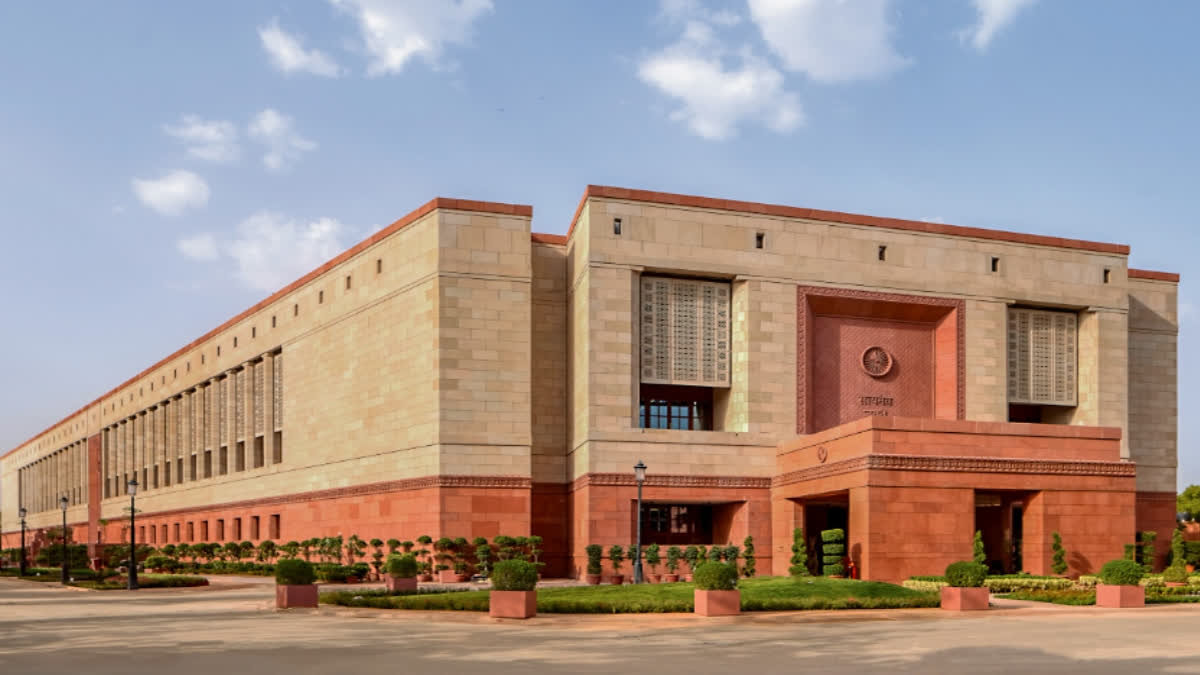A widely known fact about the Indian Parliament is that it comprises 543 members, who are elected through popular elections conducted once every 5 years. Each member belongs to a particular electoral constituency spread across all states and Union territories, from where they are voted into the Lok Sabha. What is worth probing is how these constituencies come into being, and how the entire country is carved into them. Are there certain constitutional principles that underpin this process? And what exactly is at stake when constituencies are being defined?
How Constituencies Come Into Being...
In September 2023, the Union Home Minister indicated that soon after the 2024 Lok Sabha polls, the country will embark on two key tasks – first, conducting the population census, and second, delimiting our electoral constituencies. Delimitation is the process by which the boundaries of electoral constituencies are fixed, with the constituencies representing those territories whose populations vote for representatives to represent them in the legislature. Essentially, constituencies actually define the 'People' who will elect a particular legislator. The outcome of delimitation also determines how many seats each state gets in the Parliament of India, which means that this exercise is also critical to the composition of the legislature.
In simple words, delimitation redraws the boundaries of Parliamentary and assembly constituencies resulting in an increase in the number (of constituencies) according to the latest population. This is done for every state so that a balance is achieved between the number of constituencies and the population.
Why is this balance important? The Constitution, through one of its provisions (which is Article 81), mandates that each state receive seats in proportion to its population and allocates those seats to constituencies of roughly equal size. This is to ensure adherence to the principle of equal representation in voting – that the value of one person's vote should be the same as any other person's. The Constitution requires political equality and expects each legislator to represent roughly the same number of citizens.
Not following this principle – which is called the 'one person, one vote, one value' principle – means that some voters will have more of a say than others in deciding how legislatures are formed and laws are made. This is exactly what happens when constituencies have different population levels. If voters of each constituency elect one representative each, the vote of a person in a less populous constituency is more influential than the vote of a person in a more populous constituency.
Constitutional expectations and political realities
Delimitation occurs in accordance with a law called the "Delimitation Act", which is passed by Parliament ahead of every impending redrawing of boundaries. This Act sets up a body called the Delimitation Commission, which is tasked with redrawing the boundaries of both the Lok Sabha as well as legislative assemblies' constituencies based on the last census.
This Commission is not a permanent body and is brought into existence only for the duration in which the process of delimitation occurs. Till date, four Delimitation Acts have been passed for India, one each in 1952, 1962, 1972, and 2002. The Delimitation Commission of 1972 pegged the number of Lok Sabha seats at 542 (which was later increased to 543 with the addition of 1 seat for Sikkim). This number has remained steady since the 1970s.
The Constitution also expects boundaries of electoral constituencies to be revisited after every decennial census to account for changes in the country's population, and consequently increase seats in the Lok Sabha. However, since the 1970s, there has been no increase in the number of Lok Sabha seats. This is because in 1976, the 42nd Amendment to the Constitution froze the number of Lok Sabha seats as per the census of 1971, up to the census of 2001. This freeze was effected to allay concerns of those states (mostly in south India) which took a lead in population control and faced the prospect of reduction of their number of seats in the Lok Sabha. In 2001, however, the day of reckoning was pushed further to 2026. Given this fast-approaching deadline, a fresh delimitation should be in the offing. While delimitation has been carried out for redrawing boundaries in specific states and Union territories (such as Assam and Jammu and Kashmir), a delimitation for the entire country has not happened since 2002.
The freeze on any change in the number of Lok Sabha seats has meant two things – first, demographic changes in states since the 1970s have not been accounted for in the composition of the Lok Sabha; and second, India faces a grave impending crisis of representation because the process for allocating seats to different states according to their populations has been postponed (more than once) since 1976.
What is at stake?
At the core of this issue is two key constitutional values competing with one another – federalism on the one hand, and the 'one person, one vote, one value' principle on the other:
Federalism and the inter-state allocation of parliamentary seats
Over the years, the population in north India has increased at a faster rate, as compared to south India. If population figures from the 2011 census are considered and made the basis of seat allocations, it is expected that Tamil Nadu, undivided Andhra Pradesh, Kerala, West Bengal, and Odisha could lose a total of 31 seats, while Uttar Pradesh, Bihar, Rajasthan, and Madhya Pradesh could gain 31 seats. This would be a fairly significant increase in the number of constituencies in the northern states, increasing their presence in Parliament disproportionately, and to the disadvantage of southern states.
The comparative value of individual votes between North-South and urban-rural voters
Given the uneven population growth, the value of a vote in North India is much lower than in South India. In practical terms, this means that Members of Parliament ('MPs') in states in north India represent more voters than MPs in south Indian states. In numerical terms, this means that one Lok Sabha MP in Uttar Pradesh represents 25 lakh voters, while in Tamil Nadu and Kerala, this number stands at 18 lahks and 17 lakhs respectively.
Additionally, the pace of urbanisation and migration has resulted in wider disparities between the population levels of urban and rural areas within a state as well. Without the allocation of more seats and constituencies to more populous urban areas, voters in those areas would end up having less of a say in elections than voters in rural areas.
A moment of careful consideration
Redrawing the boundaries of electoral constituencies will have major practical consequences for the functioning of Indian democracy as well as the representation of states' interests in Parliament. The freeze in 1976 was necessitated by states’ apprehensions embedded in the consequences of their population control measures and widely differing fertility rates. Needless to say, such concerns hold good even today.
The delimitation of constituencies will need answers to certain vexed questions. If done entirely in terms of proportion of population, the redrawing of constituencies would yield more seats to states in the North, given their higher population. Besides concerns around representation, this will also lead to distrust on the part of states in the South. A robust conversation around delimitation needs to start soon so that the lifting of the freeze on the allocation of seats does not have to be pushed back further. That will be a stop-gap solution to an imminent concern, one that cannot be wished away.



